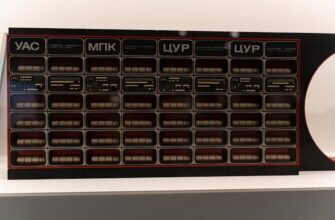🔒 Total Privacy. No Questions Asked.
USDT Mixer is your best shield against blockchain tracing. 🔗
Anonymous, fast, and designed to leave zero footprint. 🌫️
Just connect, mix, and disappear — it’s that simple.
- Introduction: The Privacy Paradox in Cryptocurrency
- What Exactly Is a Crypto Mixer?
- How Crypto Mixers Work: The Anonymization Process
- Legal Gray Zones: Where Crypto Mixers Stand Globally
- Are Crypto Mixers Safe? 5 Critical Risks to Consider
- Safer Alternatives to Crypto Mixers (If You Need Privacy)
- Frequently Asked Questions (FAQs)
- Q: Is using a crypto mixer illegal?
- Q: Can mixed crypto still be traced?
- Q: What happens if a mixer gets hacked?
- Q: Are there “safe” mixers?
- Q: Why do exchanges block mixer-related transactions?
- Conclusion: Privacy vs. Peril
Introduction: The Privacy Paradox in Cryptocurrency
As cryptocurrencies gain mainstream traction, the tension between transparency and privacy intensifies. Blockchain’s public ledger—a core feature enabling security—also exposes every transaction to scrutiny. Enter crypto mixers (or tumblers), services promising to obscure transaction trails by pooling and redistributing funds. But the critical question remains: Is using a crypto mixer safe? This article dissects the technology, legal pitfalls, security risks, and ethical dilemmas, arming you with knowledge to navigate this controversial tool.
What Exactly Is a Crypto Mixer?
A crypto mixer is a service that breaks the traceable link between cryptocurrency senders and recipients. When you send coins through a mixer, they’re pooled with other users’ funds, shuffled, and redistributed to destination addresses after deducting a fee (typically 1-5%). This process aims to sever the blockchain’s transparent audit trail. Mixers operate in two primary formats:
- Custodial Mixers: Users send coins to the mixer’s wallet, trusting the operator to redistribute anonymized funds.
- Non-Custodial/Peer-to-Peer Mixers: Leverage protocols like CoinJoin, where users coordinate transactions without surrendering custody to a third party.
How Crypto Mixers Work: The Anonymization Process
Understanding the mechanics reveals why mixers attract both privacy advocates and regulatory scrutiny:
- Deposit: User sends cryptocurrency to the mixer’s address.
- Pooling: Funds from multiple users merge into a shared liquidity pool.
- Shuffling: Algorithms fragment and recombine coins across new addresses.
- Delay & Distribution: After a randomized time lag, equivalent value (minus fees) is sent to the recipient’s wallet from unrelated addresses.
This process aims to create plausible deniability, though advanced blockchain analysis can sometimes unravel these obfuscation attempts.
Legal Gray Zones: Where Crypto Mixers Stand Globally
Legality varies dramatically by jurisdiction, creating a minefield for users:
- Banned Regions: Mixers are illegal in the U.S. (FinCEN classifies them as MSBs requiring registration), Germany, and Australia.
- AML/KYC Pressure: Regulatory bodies like FATF mandate exchanges to blacklist mixer-related transactions, freezing funds.
- Ethical Dilemma: While privacy is a legitimate right, mixers enable money laundering, ransomware payments, and darknet markets—forcing platforms to choose between compliance and anonymity.
Are Crypto Mixers Safe? 5 Critical Risks to Consider
Safety concerns extend far beyond legality. Key dangers include:
- Exit Scams: Custodial mixers can vanish with user funds—over $30M was stolen in 2022 alone (Chainalysis).
- Data Logging: Many mixers secretly record IPs, wallet addresses, or timestamps, creating honeypots for hackers or law enforcement.
- Blockchain Forensics: Firms like Elliptic use pattern analysis to de-anonymize mixed transactions, potentially flagging your wallet.
- Fee Manipulation: Hidden fees or unfavorable exchange rates can drastically reduce output value.
- Smart Contract Exploits: Decentralized mixers face code vulnerabilities—e.g., Tornado Cash’s $1M hack in 2023.
Safer Alternatives to Crypto Mixers (If You Need Privacy)
For legitimate privacy needs, consider these lower-risk options:
- Privacy Coins: Monero (XMR) or Zcash (ZEC) use cryptographic techniques like ring signatures and zk-SNARKs to anonymize transactions natively.
- Decentralized Swaps: Use DEXs (Uniswap, PancakeSwap) or atomic swaps to exchange coins without KYC.
- CoinJoin Implementations: Self-custodial tools like Wasabi Wallet or Samourai Wallet coordinate peer-to-peer mixing without third-party risk.
- Layer-2 Solutions: Lightning Network (Bitcoin) or Aztec Protocol (Ethereum) enable private off-chain transactions.
Frequently Asked Questions (FAQs)
Q: Is using a crypto mixer illegal?
A: In many countries, yes. The U.S. Treasury sanctions mixers like Tornado Cash, and regulators globally treat them as high-risk money transmitters. Even in regions without explicit bans, transactions may trigger AML investigations.
Q: Can mixed crypto still be traced?
A: Sometimes. Sophisticated blockchain analysis can identify mixing patterns or correlate timing/data leaks. Non-custodial mixers offer stronger anonymity than custodial services.
Q: What happens if a mixer gets hacked?
A: Users lose their funds irreversibly. Custodial mixers are prime targets—only non-custodial options eliminate this risk.
Q: Are there “safe” mixers?
A: No mixer is 100% safe. Even reputable projects face legal shutdowns (e.g., Blender.io seized by U.S. authorities) or technical failures. Privacy coins remain a safer choice.
Q: Why do exchanges block mixer-related transactions?
A: To comply with anti-money laundering (AML) laws. Receiving funds from a mixer may get your exchange account frozen or closed.
Conclusion: Privacy vs. Peril
Crypto mixers present a high-risk gamble: they promise anonymity but deliver legal jeopardy, security flaws, and ethical compromises. While blockchain transparency threatens privacy, solutions like privacy coins or decentralized tools offer protection without entrusting funds to opaque third parties. For most users, the dangers of mixers—from exit scams to regulatory backlash—far outweigh fleeting anonymity. Always prioritize compliance and self-custody in your crypto journey.
🔒 Total Privacy. No Questions Asked.
USDT Mixer is your best shield against blockchain tracing. 🔗
Anonymous, fast, and designed to leave zero footprint. 🌫️
Just connect, mix, and disappear — it’s that simple.








